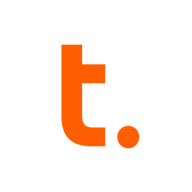

Teradata and Oracle Big Data Appliance compete in the enterprise data management market. Oracle Big Data Appliance seems to have the upper hand due to its extensive features and integration capabilities.
Features: Teradata is known for its scalability, robust analytics, and adaptability to various operations. Oracle Big Data Appliance offers advanced integration with Oracle's suite, enhanced security features, and extensive data processing capabilities that appeal to enterprises invested in Oracle's ecosystem.
Room for Improvement: Teradata can improve user interface compatibility, streamline integration with non-Teradata tools, and enhance reporting flexibility. Oracle Big Data Appliance could simplify its deployment process, offer more flexible pricing models, and expand its support for diverse data formats.
Ease of Deployment and Customer Service: Teradata is praised for its straightforward deployment and responsive support. Despite the complexity in deployment, Oracle Big Data Appliance benefits from extensive documentation and Oracle's dedicated service resources, addressing potential deployment challenges with robust support.
Pricing and ROI: Teradata is cost-effective, offering a quicker ROI which is appealing for budget-conscious businesses. Oracle Big Data Appliance, though requiring a higher initial investment, delivers substantial long-term value through expansive capabilities and integration potential, suitable for those seeking sophisticated data management solutions willing to invest for superior performance.
| Product | Market Share (%) |
|---|---|
| Teradata | 10.3% |
| Oracle Big Data Appliance | 2.1% |
| Other | 87.6% |

| Company Size | Count |
|---|---|
| Small Business | 1 |
| Midsize Enterprise | 1 |
| Large Enterprise | 6 |
| Company Size | Count |
|---|---|
| Small Business | 28 |
| Midsize Enterprise | 13 |
| Large Enterprise | 52 |
Oracle Big Data Appliance is a flexible, high-performance, secure platform for running diverse workloads on Hadoop and NoSQL systems. With Oracle Big Data SQL, Oracle Big Data Appliance extends Oracle’s industry-leading implementation of SQL to Hadoop and NoSQL systems. By combining the newest technologies from the Hadoop ecosystem and powerful Oracle SQL capabilities together on a single pre-configured platform, Oracle Big Data Appliance is uniquely able to support rapid development of new Big Data applications and tight integration with existing relational data.
For more information on Oracle Big Data Appliance, visit Oracle.com
Teradata is a powerful tool for handling substantial data volumes with its parallel processing architecture, supporting both cloud and on-premise environments efficiently. It offers impressive capabilities for fast query processing, data integration, and real-time reporting, making it suitable for diverse industrial applications.
Known for its robust parallel processing capabilities, Teradata effectively manages large datasets and provides adaptable deployment across cloud and on-premise setups. It enhances performance and scalability with features like advanced query tuning, workload management, and strong security. Users appreciate its ease of use and automation features which support real-time data reporting. The optimizer and intelligent partitioning help improve query speed and efficiency, while multi-temperature data management optimizes data handling.
What are the key features of Teradata?
What benefits and ROI do users look for?
In the finance, retail, and government sectors, Teradata is employed for data warehousing, business intelligence, and analytical processing. It handles vast datasets for activities like customer behavior modeling and enterprise data integration. Supporting efficient reporting and analytics, Teradata enhances data storage and processing, whether deployed on-premise or on cloud platforms.
We monitor all Data Warehouse reviews to prevent fraudulent reviews and keep review quality high. We do not post reviews by company employees or direct competitors. We validate each review for authenticity via cross-reference with LinkedIn, and personal follow-up with the reviewer when necessary.